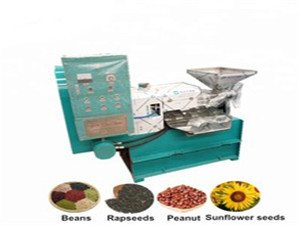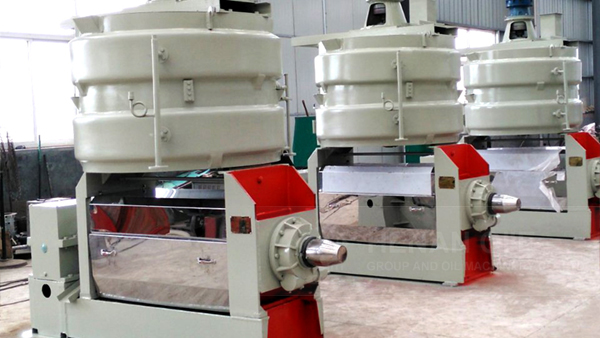Free Download of Pretreatment Toolkit for Screw Oil Press: PDF Template of 'Oil Pretreatment Operation Checklist'
2025-09-27
Product related content
The pre - treatment of oilseeds before pressing is a crucial step that determines the efficiency of the screw oil press and the quality of the extracted oil. This article details the entire process of operation points, from raw material cleaning, crushing, steaming and roasting to conditioning. Combining the characteristics of common oilseeds such as rapeseeds, peanuts, and cottonseeds, it provides practical parameter references and guides to avoid pitfalls. A free PDF template of the 'Oil Pretreatment Operation Checklist' is attached to help beginners quickly get started, reduce equipment wear, and improve oil - pressing efficiency. Let every pre - treatment be the starting point of efficient production.

Optimize Your Screw Oil Press with Effective Pretreatment
You're in the oil extraction business, and you know that the pretreatment of oilseeds before pressing is the linchpin for the efficiency of your screw oil press and the quality of the extracted oil. In this article, we'll break down the entire process of oilseed pretreatment, from cleaning to pressing, and provide you with practical tips and a free downloadable PDF template, The Oil Pretreatment Operation Checklist, to help you streamline your production.
The Five Core Steps of Oil Pretreatment
Let's start by looking at the five key steps in oil pretreatment: cleaning, crushing, steaming, conditioning, and pressing. Each step has a significant impact on the subsequent processes and the final output.
- Cleaning: This is the first and crucial step. Removing impurities such as stones, dirt, and other foreign materials from the oilseeds can prevent equipment damage and ensure smooth operation. For example, in a rapeseed processing plant, proper cleaning can reduce the risk of clogging in the press by up to 80%.
- Crushing: Breaking the oilseeds into smaller pieces increases the surface area for subsequent processing. Adjusting the crushing particle size can have a direct impact on the oil yield. A factory reported that by optimizing the crushing particle size, they were able to increase the oil yield by 3%.
- Steaming: Steaming the crushed oilseeds helps to adjust the moisture content and temperature, which is essential for protein denaturation and oil release. The table below shows the recommended steaming temperatures for different oilseeds:
| Oilseed Type |
Steaming Temperature (°C) |
| Rapeseed |
100 - 110 |
| Peanut |
120 - 130 |
| Cottonseed |
110 - 120 |
Controlling the temperature is crucial, especially for peanuts. Overheating can cause protein denaturation, which affects the oil quality and yield.

Special Requirements for Different Oilseeds
Different oilseeds have their own unique characteristics and require specific treatment methods. For instance:
- Rapeseed: Rapeseed often contains small impurities that can easily clog the press. Therefore, thorough cleaning is necessary to prevent blockages.
- Peanut: As mentioned earlier, temperature control during steaming is critical to avoid protein denaturation. Maintaining the right temperature can ensure a high - quality oil output.
- Cottonseed: Cottonseed has a high fiber content, and proper crushing and conditioning are needed to improve the oil extraction efficiency.
Real - World Case Comparison
Let's take a look at a real - world example. A factory compared the oil extraction process with and without proper steaming. The results were astonishing. In the non - steamed group, the oil yield was only 35%, and the quality of the cake was poor. In contrast, the group with standard steaming achieved an oil yield of 42%, and the cake had better nutritional value and was more suitable for animal feed. This clearly shows the importance of following the correct pretreatment process.
Practical Tools and Solutions
To help you implement these processes effectively, we've prepared a standardized operation process template and solutions to common problems. Additionally, we've included short video clips or GIFs to demonstrate key operation techniques, making it easier for you to understand and follow.

Now, we'd like to ask you: Which type of oilseed do you find the most difficult to pre - treat? Share your experiences in the comments below.
Don't miss out on this opportunity to enhance your oil production efficiency. Download the free Oil Pretreatment Operation Checklist PDF template now and unlock the secrets to efficient production. Click here to get your hands on this valuable resource.






